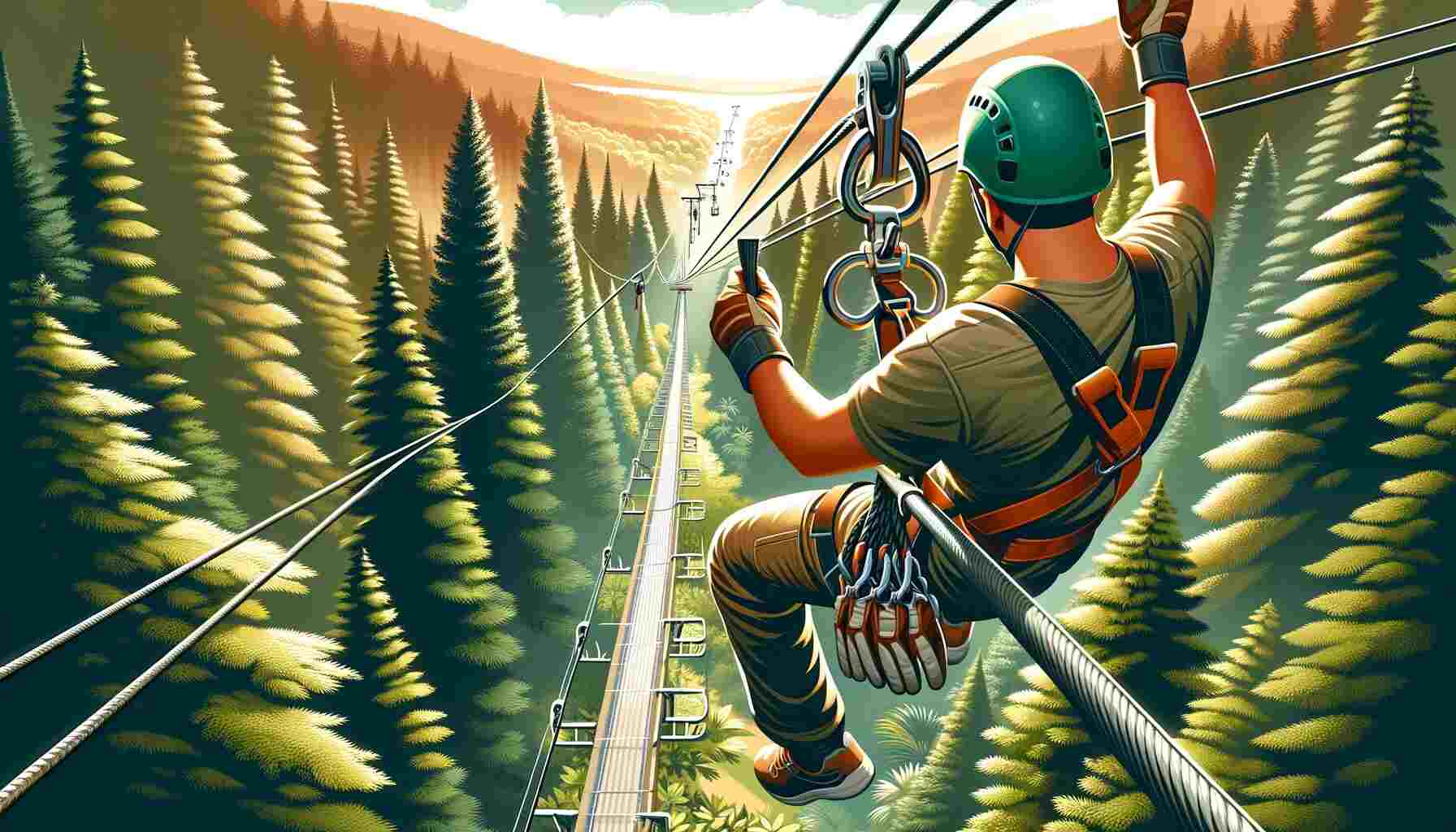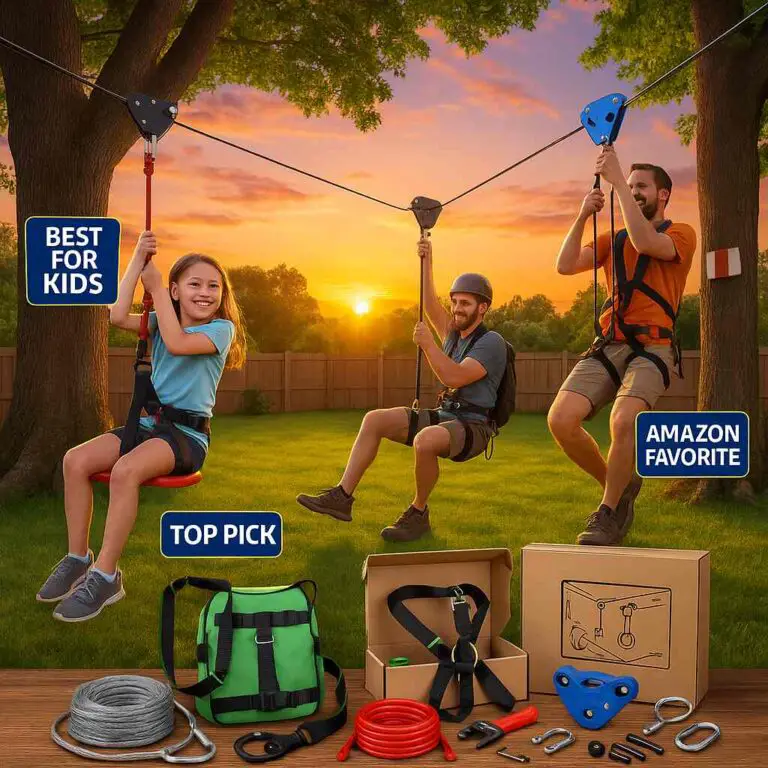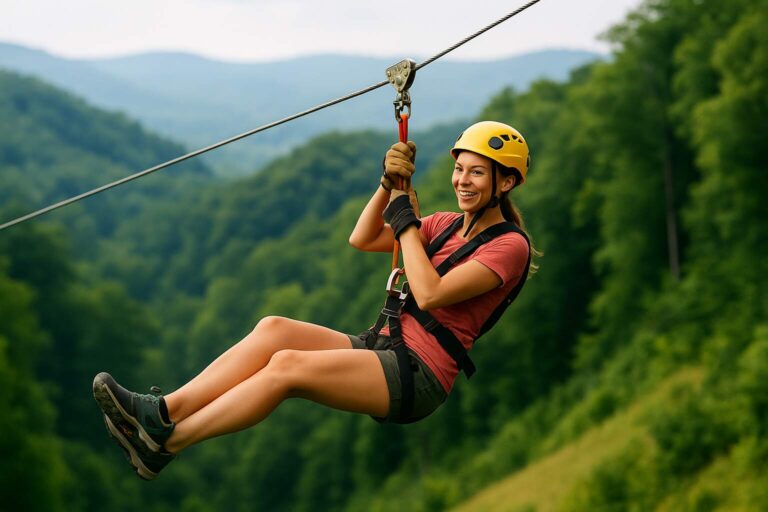While ziplining is undeniably exhilarating, it’s essential to prioritize safety to ensure an enjoyable experience without any accidents or mishaps. In this comprehensive guide, we’ll delve deep into zipline safety rules, providing you with the knowledge and precautions needed to embark on this thrilling adventure confidently.
Understanding the Basics of Ziplining
Before we dive into safety rules, let’s start by understanding the fundamentals of ziplining.
What is Ziplining?
Ziplining involves traversing a cable from an elevated point to a lower one, often at high speeds, using a harness and a pulley system. It’s a fun way to experience the sensation of flying while taking in stunning vistas.
Zipline Components
- Cables: These are the primary infrastructure of a zipline, providing the path for riders. They are typically made of steel or strong synthetic materials to ensure durability.
- Harness and Trolley: Riders wear a harness that attaches to a trolley, which slides along the cable. The trolley often has handles for riders to hold onto. Check out this highly-rated zipline harness.
- Braking System: Some ziplines have automatic braking systems, while others require riders to manually brake using a glove or a hand-held device.
Zipline Safety Rules and Precautions
Now that we’ve covered the basics, let’s explore the essential safety rules and precautions you should follow while ziplining:
1. Choose a Reputable Zipline Operator
The first step in ensuring your safety is to select a reputable zipline operator. Research their safety record, read reviews, and check if they follow industry safety standards and guidelines. A well-established operator will prioritize your safety.
2. Follow the Guides’ Instructions
When you arrive at the zipline location, you’ll receive instructions from experienced guides. Pay close attention to their advice and follow their directions meticulously. They are there to ensure your safety and guide you through the adventure.
3. Wear the Appropriate Gear
Proper attire is crucial when ziplining. Make sure you’re wearing comfortable clothing and closed-toe shoes. The zipline operator will provide you with a helmet and a harness. Ensure that these are snugly fitted and adjusted correctly by the guides.
Check out this comfortable and secure helmet
4. Understand the Braking System
Different ziplines may have varying braking systems. Some are automatic, while others require riders to brake manually. It’s vital to understand how the braking system works before you take off. If it’s manual, practice using it under the guidance of the staff. Explore this reliable braking glove.
5. Maintain Proper Body Position
While ziplining, maintain the correct body position. Keep your body upright, hold onto the handles (if available), and avoid swinging or twisting unless instructed otherwise. Proper body posture enhances stability and control.
6. Respect Weight and Height Limits
Zipline operators impose weight and height limits for safety reasons. These limits are in place to ensure that the equipment can safely support riders. Always adhere to these restrictions, and if you have any concerns, discuss them with the operator in advance.
7. Be Mindful of Weather Conditions
Weather conditions can affect the safety of ziplining. High winds, lightning, or heavy rain can make ziplining hazardous. Operators will usually have protocols for inclement weather, so it’s essential to follow their guidance and be flexible with your plans.
8. Check for Age Restrictions
Zipline courses often have age restrictions, especially for children. Ensure that you meet the minimum age requirements if you plan to zipline with your family.
9. Stay Sober
Refrain from consuming alcohol or any intoxicating substances before ziplining. Impairment can impair your judgment and coordination, increasing the risk of accidents.
10. Listen to Your Body
If you have any medical conditions or physical limitations, inform the zipline operators before your adventure. They can provide guidance on whether ziplining is suitable for you or suggest modifications to ensure your safety.
11. Respect the Environment
Ziplining often takes place in natural settings. Show respect for the environment by not littering, adhering to designated paths, and not disturbing wildlife.
Conclusion
Ziplining is an exhilarating adventure that can provide unforgettable memories. However, safety should always be the top priority. By following the zipline safety rules and precautions outlined in this guide and choosing a reputable operator, you can enjoy the thrill of ziplining while minimizing the risks. Remember, ziplining can be safe and thrilling, as long as you prioritize safety and follow the guidelines. So gear up, listen to your guides, and soar through the treetops with confidence!
Remember, while this guide provides valuable information, always defer to the specific safety instructions and guidelines provided by the zipline operator you choose. Have a safe and thrilling ziplining adventure!
Here’s another great article to read: Zipline Dos and Don’ts








